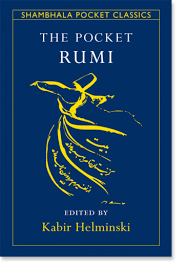Whirling Dervishes of Turkey
- Sandra Cesca

- Sep 1, 2024
- 3 min read
Do you remember twirling around as a kid, trying to see how long you could do it till you fell from dizziness? Imagine completing 20-30 revolutions per minute for almost an hour and you get some idea what the Whirling Dervishes must do as part of their Sufi ritual to the remembrance of God. I attended one of their performances in Istanbul when I was roaming around Turkey a couple of years ago. It fascinated me with its strangeness and beauty so I did a bit of research to learn more about their tradition and history.
Dervish is a common term for an initiate of the Sufi branch of Islam; whirling is part of the formal sema ceremony and the participants are known as semazens. The semazen can achieve a state of harmony with all things, transcending the ego to arrive at perfection and thus, like Allah, able to serve all of creation equally without discrimination. This relates to the pilgrimage to Mecca, in that both are intended to bring all who are involved closer to God.
This seven hundred-year-old sema ritual began in honor of Jalâluddîn Rumi (1207-1273), perhaps the greatest mystical poet of Islam, and was influenced by Turkish customs and culture. The Mevlevi (meaning master or scholar) Sufi order was founded to follow his teachings which have been the inspiration of millions of people the world over.
Dervish communities during the Middle Ages served a central role in social, religious, and political life throughout the central Islamic lands. At one time, Dervish orders were much larger in size than they are today as the government took control over most Dervish monasteries. In 1925, Turkey ordered the dissolution of all Sufi orders by decree. However, the Mevlevi order managed to survive among small villages. In 1954, the Turkish government granted the Mevlevi order special permission to perform ritual whirling practices for tourists.
To become a Dervish, one must take a vow of poverty and live in monastic conditions, similar to Christian monks. For these Dervishes, spinning is their way of worshipping God. Although women are part of the Sufi Mevlevi order, the dervish dancers are typically men.
An important characteristic of the sema ritual is that it unites the three fundamental components of human nature: the mind (through knowing), the heart (through the expression of feelings, poetry, and music), and the body (through the turning). There are several components to the ceremony.
First, dervishes slowly increase the number of turns tricking the brain to become less and less sensitive to the impulses it receives. Revolutions are counterclockwise representing the path of the planets around the sun, particles in atoms, movement of the blood, etc. Becoming one with this universal rotation unites them in a love with all humanity, inducing a feeling of total rapture.
Second, they keep their head in a tilted position that balances out the liquids inside the inner ear to minimizes the sensation of imbalance, allowing them to avoid becoming dizzy.
Third, recitation of devotional Islamic prayer is coupled with music, singing of hymns, and chanting.
The costume of the Dervish also has symbolic meaning. The semazen's camel hair hat represents the tombstone of the ego and his wide, white skirt the ego's shroud. By removing his outer black cloak before whirling, he is spiritually reborn to the truth. Arms are initially crossed over the chest in subservience to God’s will.
Performances are held in several locations throughout Turkey including the annual December festival at Konya. The Galata Mevlevi Museum, Istanbul’s first Sufi lodge, is undoubtedly the most famous Mevlevi Whirling Dervish hall and where I took these photos. It was established in 1491 and underwent numerous renovations due to fires and earthquakes that were a common occurrence in Istanbul in the past.
In 2005, UNESCO proclaimed the Mevlevi Sema Ceremony of Turkey as one of the “Masterpieces of the Oral and Intangible Heritage of Humanity.”
Sandra Cesca, Freelance Writer and Cultural Photographer




















Comments